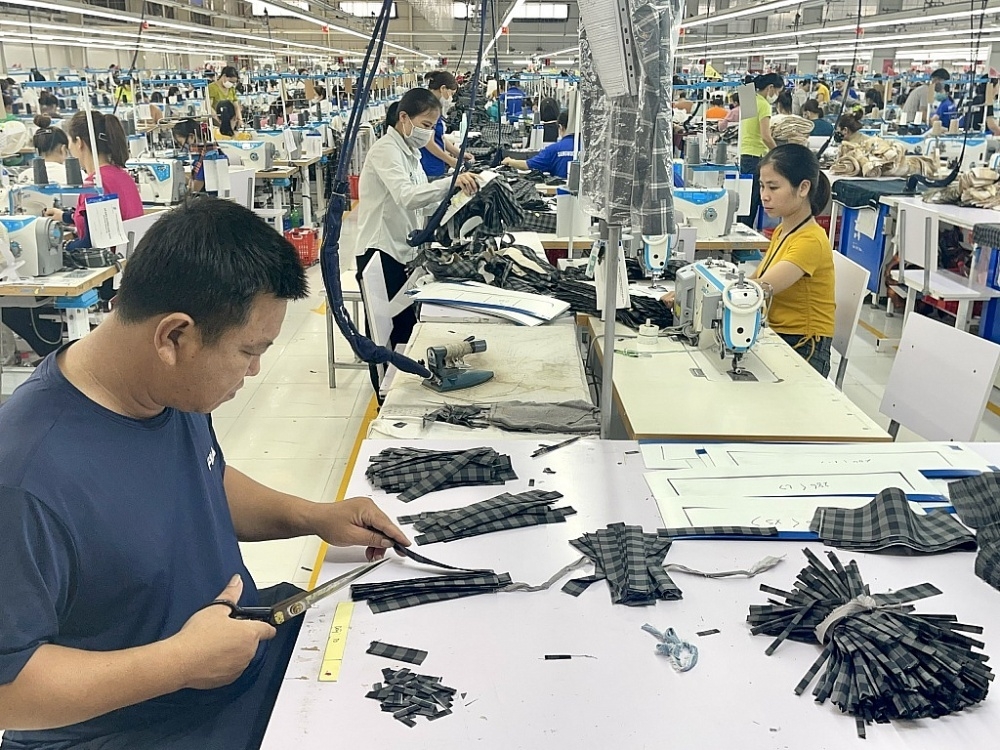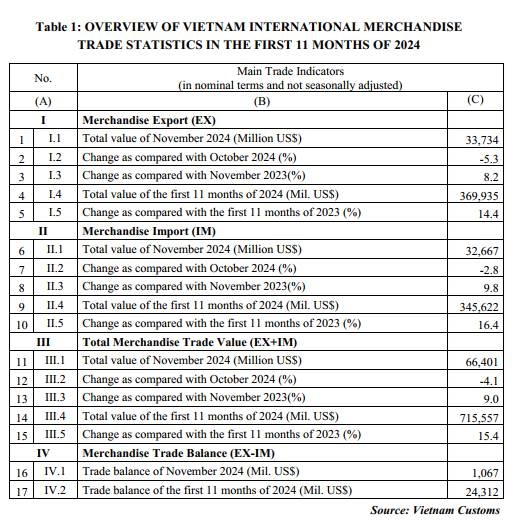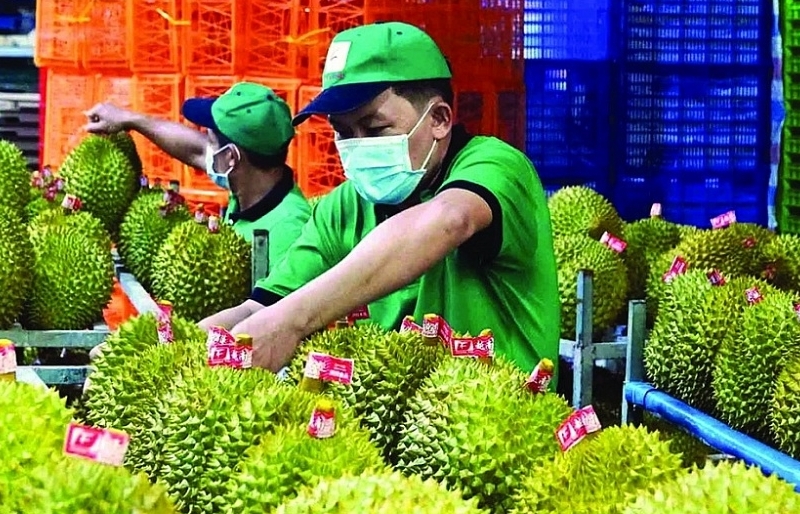"Win" together with EVFTA
 |
| Businesses need to exploit opportunities from FTAs to expand goods consumption markets |
Facilitating an increase of export
Mr. Luong Van Tu, former Deputy Minister of Industry and Trade, former Head of the Government's economic and trade negotiation team to join the WTO and AEC, former Chairman of the Vietnam Coffee and Cocoa Association said that the EU was the most important market. For Vietnamese coffee, it accounted for about 40% of Vietnam's coffee exports. All major EU corporations related to coffee were present in Vietnam. However, in the past, cooperation among businesses of both sides was mainly in growing and purchasing unprocessed green coffee.
With the EVFTA tax reduction roadmap for roasted and ground coffee, instant coffee and other coffee products down to 0%, it creates conditions for processing and increases the value and turnover of Vietnamese coffee sold into the EU. Recently, machinery and equipment related to coffee processing from the EU have been present in Vietnam because the main machines in the production line are often imported by businesses from Germany, Denmark... to ensure that they meet the export standards for processed coffee.
Sharing about opportunities in the import-export chain with EU businesses, Mr. Phan Minh Thong, Chairman of the Board of Directors of Phuc Sinh Group, said that cooperation with the EU increased export.
“While working, we see that the EU is one of the leading importers in food safety and hygiene, strict control of product quality, and sustainable development. If we cooperate with the EU, we can learn and develop well compared to other world supply sources”, Mr. Phan Minh Thong assessed and emphasized that when we successfully export to the EU, we could export to many other markets around the world. Because many importers from Taiwan (China) and Korea also take EU standards.
In addition, when there is an agreement with the EU, the banking system, insurance organizations, and financial companies of the EU will also provide credit to places of purchase. For example, if Vietnam buys goods from the EU, we can also benefit from those credit systems. However, Mr. Phan Minh Thong said that when working with the EU, we must be very disciplined and also had many challenges.
At the same time, the EU also stands out in terms of good, modern machinery and technology. For example, Phuc Sinh Group imports EU machinery, uses those machinery to process, produce and export products to the EU. That brings two-way benefits. “When we use machinery and brands from the EU, it seems that European companies are more easily accepting of us, especially deeply processed goods in the food industry. Currently, Phuc Sinh's sales in the EU market are the largest, accounting for 45% to 55% of the revenue with about US$ 250 million”, Phuc Sinh Group representative emphasized.
"Dual" benefits from association and cooperation
Mr. Luong Van Tu also said that investing in modern machinery and equipment was an issue that needs attention. For example, in the coffee industry, many businesses invested in their own machinery and equipment and need policy support from the state. If they invest in a factory without a medium-term loan, they cannot invest and will only loss.
“The time has come to create conditions for Vietnamese businesses to buy technology and invest themselves to develop, because foreigners never stay forever. The path of foreign investors is to find a safe place, a profitable place. When it is no longer safe or profitable, they have to look elsewhere. Therefore, we should prepare now so that in the next 10-15 years, the export rate of Vietnamese businesses must exceed the rate of foreign investors, only then we will be sustainable”, Mr. Luong Van Tu shared.
From the perspective of state management agencies, Mr. Ngo Chung Khanh, Deputy Director, Department of Multilateral Trade Policy (Ministry of Industry and Trade) said that the Vietnam - EU technology transfer cooperation had two- way benefits. Many EU businesses had actively shared technology or techniques with Vietnamese businesses. For example, the Piaggio Group and the motorbike brands Piaggio and Liberty had a localization rate of 80 to 90%. This number was very encouraging, because with such a high localization rate, many Vietnamese businesses would be able to participate in Piaggio's supply chain. Currently, there were nearly 100 Vietnamese businesses that were subcontractors of Piaggio. Bosch Group was also a very good manufacturer and technology transferer. They had built a research center in Vietnam, trained employees and transferred technology to Vietnam.
“These are typical models showing that EU businesses are also very interested in sharing technology or improving the qualifications of Vietnamese workers, so that there are two-way benefits. If Vietnamese partners have good standards, high standards and good human resources, they obviously also benefit”, Mr. Ngo Chung Khanh shared.
Linking Vietnamese businesses with FDI e businesses is one of the very important tasks in the plan on implementing new generation FTAs, however, according to Mr. Ngo Chung Khanh, in recent times this activity had not been implemented effectively. Connection activities between businesses with FDI businesses and EU businesses were mainly still in big cities, such as Hanoi, Ho Chi Minh City, Hai Phong, and Da Nang.
Experiences in connecting domestic businesses with EU businesses need to be shared and spread more widely to provinces and cities. Mr. Ngo Chung Khanh informed that on October 12, the leaders of the Ministry of Industry and Trade would chair a conference of leaders of Departments of Industry and Trade nationwide to review and reevaluate the implementation and especially share successful experience in connecting domestic businesses with foreign businesses in general and EU businesses in particular. In addition, investment and trade promotion activities would help bring European and Vietnamese businesses closer together, thereby raising the level of FTAs.
Related News

Preliminary assessment of Vietnam international merchandise trade performance in the first 11 months of 2024
10:50 | 27/12/2024 Customs Statistics
Latest News

Việt Nam becomes second biggest garment exporter globally
16:36 | 27/12/2024 Import-Export

Vietnam may surpass Bangladesh in garment export: report
16:34 | 27/12/2024 Import-Export

Export tax to increase for 13 construction materials
14:31 | 27/12/2024 Import-Export

Building a brand to elevate Vietnamese rice
10:52 | 27/12/2024 Import-Export
More News

FTA Index helps measure the effectiveness of FTA implementation
10:51 | 27/12/2024 Import-Export

Nghệ An Province anticipates record FDI amidst economic upswing
15:49 | 26/12/2024 Import-Export

Green farming development needs supportive policies to attract investors
15:46 | 26/12/2024 Import-Export

Vietnamese enterprises adapt to green logistics trend
15:43 | 26/12/2024 Import-Export

Paving the way for Vietnamese agricultural products in China
11:08 | 26/12/2024 Import-Export

VN seafood export surpass 2024 goal of $10 billion
14:59 | 25/12/2024 Import-Export

Exporters urged to actively prepare for trade defence investigation risks when exporting to the UK
14:57 | 25/12/2024 Import-Export

Electronic imports exceed $100 billion
14:55 | 25/12/2024 Import-Export

Forestry exports set a record of $17.3 billion
14:49 | 25/12/2024 Import-Export
Your care

Việt Nam becomes second biggest garment exporter globally
16:36 | 27/12/2024 Import-Export

Vietnam may surpass Bangladesh in garment export: report
16:34 | 27/12/2024 Import-Export

Export tax to increase for 13 construction materials
14:31 | 27/12/2024 Import-Export

Building a brand to elevate Vietnamese rice
10:52 | 27/12/2024 Import-Export

FTA Index helps measure the effectiveness of FTA implementation
10:51 | 27/12/2024 Import-Export





